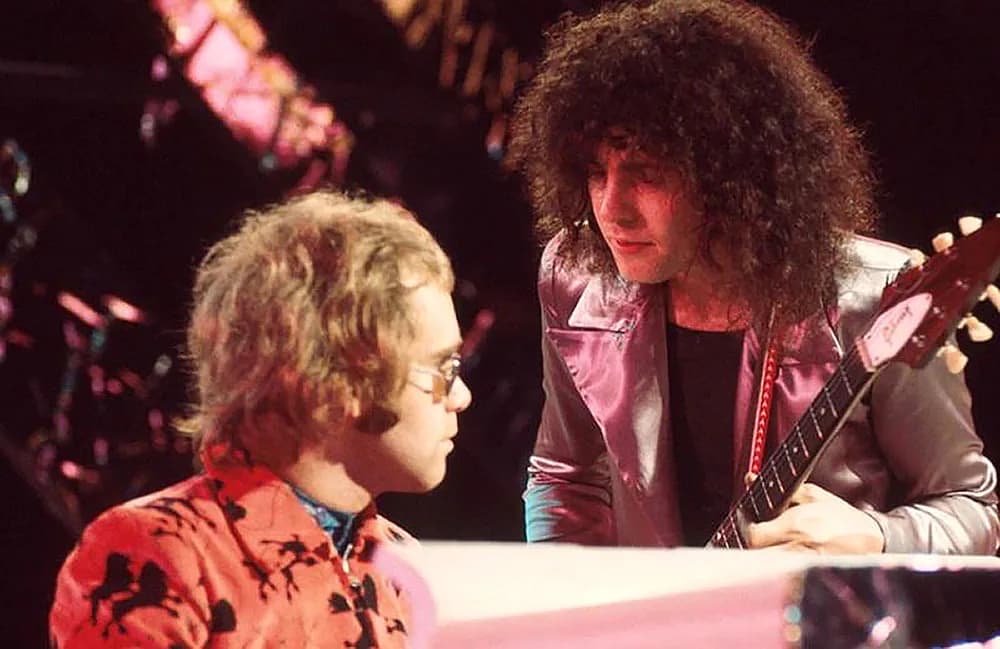
A Glittering, Glam Rock Anthem That Echoed Through a Generation’s Youthful Rebellion.
“Get It On (Bang a Gong)”, a raucous celebration of unabashed desire and the electrifying energy of youth, roared onto the charts in 1971, peaking at number 10 on the Billboard Hot 100 in the United States, and reaching the coveted number one spot in the UK Singles Chart. It was a seismic event, a cultural touchstone that resonated with a generation hungry for something vibrant, something raw, something real. This wasn’t just a song; it was a sonic manifesto, a declaration of independence from the staid conventions of the past.
Think back, if you will, to the early ’70s. The world was in flux, a swirling vortex of social change and youthful defiance. The air crackled with a restless energy, a collective yearning for something more than the mundane. And then, like a bolt from the blue, came T. Rex, led by the enigmatic Marc Bolan. He was a glittering, androgynous figure, a rock ‘n’ roll shaman who seemed to channel the very spirit of the age. With his feathered hair, sequined attire, and undeniable charisma, he was a beacon for the burgeoning glam rock movement. And “Get It On (Bang a Gong)” was his anthem.
The song’s origins are steeped in a delicious blend of rock ‘n’ roll mythology and artistic inspiration. It’s often said that Bolan was inspired by the Chuck Berry classic, “Little Queenie,” and indeed, the song’s driving rhythm and infectious energy bear a striking resemblance. However, Bolan infused it with his own unique brand of lyrical surrealism and a raw, sexual energy that was both provocative and irresistible. The song’s title, originally just “Get It On,” was expanded to “Get It On (Bang a Gong)” for the American market, reportedly to avoid confusion with another song of the same title.
The lyrics, though seemingly simple, are a masterclass in suggestive imagery and primal urges. “You’re dirty sweet and you’re my queen,” Bolan croons, his voice a seductive whisper against the song’s driving beat. “You’re so divine, you’re so unique.” It’s a celebration of raw, unadulterated desire, a primal scream of youthful lust. The “bang a gong” refrain, with its insistent, rhythmic pulse, becomes a metaphor for the very act of love itself, a primal, rhythmic act of creation.
The song’s impact was immediate and profound. It wasn’t just a hit record; it was a cultural phenomenon. It soundtracked countless parties, fueled countless romances, and became an indelible part of the collective consciousness of a generation. It was a song that captured the zeitgeist, a moment in time when anything seemed possible, when youth reigned supreme, and when the world was ripe for the taking. The album it was featured on, “Electric Warrior”, solidified T. Rex’s place as a dominant force in the Glam Rock movement.
Looking back, “Get It On (Bang a Gong)” stands as a testament to the power of rock ‘n’ roll to transcend mere entertainment and become a cultural force. It’s a reminder of a time when music was more than just a soundtrack; it was a lifeline, a source of rebellion, and a symbol of youthful abandon. It was a moment, a feeling, a time capsule of a generation’s heart. And for those of us who were there, it remains a cherished memory, a glittering echo of a time when we were young, wild, and free.